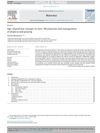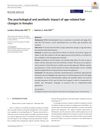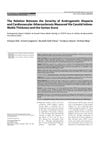TLDR Female pattern hair loss in women can be due to hormones or aging.
The document discussed female pattern hair loss, distinguishing between androgenetic and age-related causes. Dr. Elise A. Olsen presented this topic at the 12th Annual Meeting of the ISHRS in 2004. The article likely covered the clinical features, diagnosis, and treatment options for female pattern hair loss, emphasizing the differences between hormonal influences and natural aging processes. The information was based on research and clinical observations, providing insights into managing this common condition in women.
 37 citations
,
October 2014 in “Maturitas”
37 citations
,
October 2014 in “Maturitas” Men's hair loss is caused by hormones and genes, and can be treated with medication and surgery, while graying is due to aging and has no prevention except dyeing.
 1 citations
,
May 2025 in “Maturitas”
1 citations
,
May 2025 in “Maturitas” Menopause can cause hair loss in women due to hormonal changes, affecting their well-being and quality of life.
 1 citations
,
March 1992 in “Postgraduate Medicine”
1 citations
,
March 1992 in “Postgraduate Medicine” About 40% of women by age 60 experience significant hair loss, often due to androgenetic alopecia, with treatments like minoxidil available and hope for future cures.
 6 citations
,
April 2019 in “Journal of Cosmetic Dermatology”
6 citations
,
April 2019 in “Journal of Cosmetic Dermatology” Hair loss affects women's self-esteem; treatments like minoxidil can help.
 January 2016 in “Ankara Üniversitesi Tıp Fakültesi mecmuası”
January 2016 in “Ankara Üniversitesi Tıp Fakültesi mecmuası” Severe hair loss (androgenetic alopecia) is linked to higher risk of heart disease (cardiovascular atherosclerosis).






